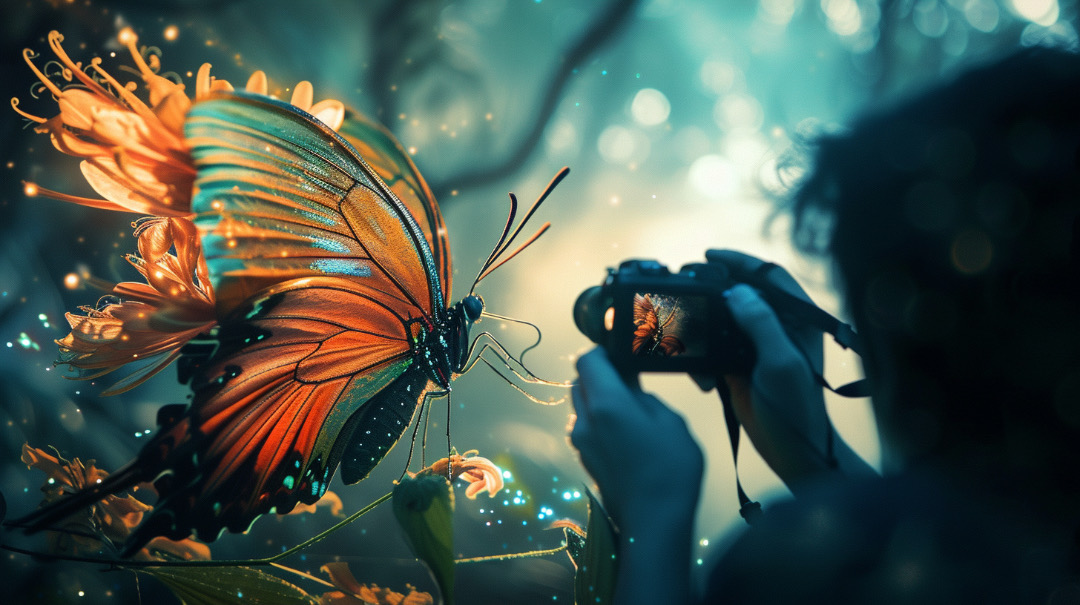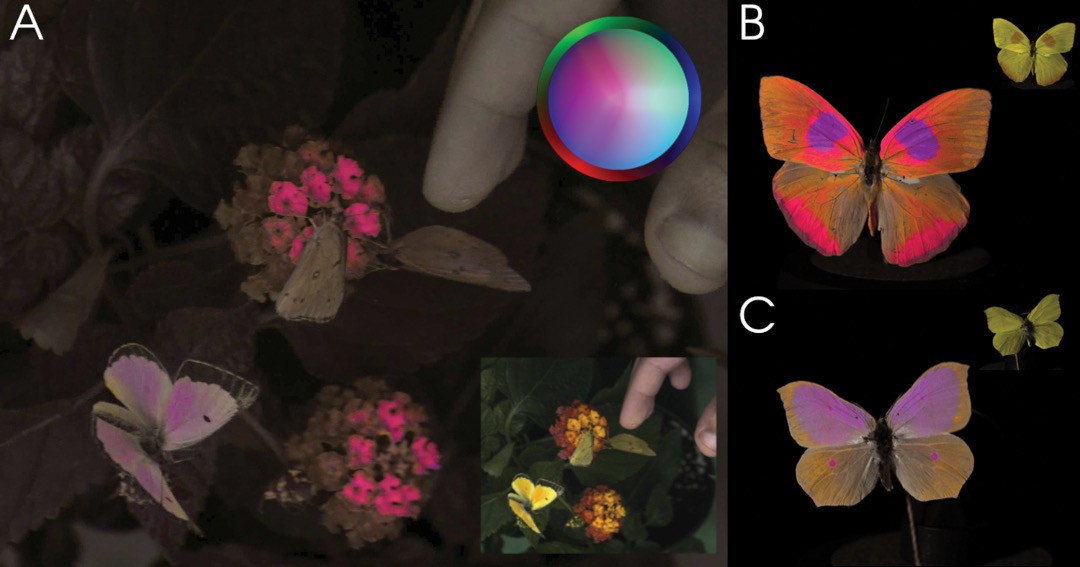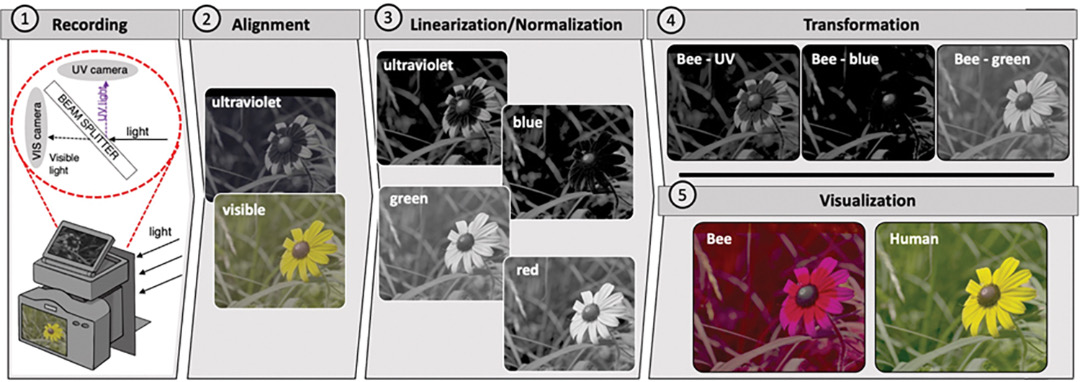Unique New Video Camera Captures How Animals See Color
By Mikelle Leow, 24 Jan 2024

Image generated on AI
Ecologists and filmmakers may soon have a new tool at their disposal: a camera system that captures the world as various animals see it, in full, vibrant motion. Developed by Vera Vasas at the University of Sussex in the UK and her colleagues at the Hanley Color Lab at George Mason University in the US, this innovative system is detailed in a recent publication in the journal PLOS Biology.
The imaging system adds color, truly, in understanding perceptions of the wild. It replicates the photoreceptors found in animals’ eyes, shedding light on how different species navigate and communicate in their natural environments.
Some winged friends, such as honeybees and several birds, perceive colors differently from humans, including seeing UV light, which is invisible to us.

Image via Daniel Hanley / PLOS Biology (Open Access)
Further, traditional methods like spectrophotometry, while useful, have limitations: they’re time-consuming, require specific lighting conditions, and can’t capture moving images.
The new camera and software overcome these challenges by recording videos in four color channels: blue, green, red, and UV. This setup contrasts with the human eye, which has photoreceptors for only blue, green, and red light. The system records animal-view videos of moving objects under natural lighting conditions, a significant advancement over previous methods.
The data from this camera can be processed into “perceptual units,” creating videos that accurately depict how animals experience colors. The team’s testing against traditional spectrophotometry methods showed an impressive over 92% accuracy in predicting perceived colors.

Image via Daniel Hanley / PLOS Biology (Open Access)
The system’s design, using commercially available cameras in a modular, 3D-printed casing, along with open-source software, makes it accessible for other researchers and filmmakers to use and adapt.
This technology opens up exciting possibilities for research and filmmaking. It allows for dynamic, accurate representations of how animals navigate the world, offering insights into their behavior and communication.
“We’ve long been fascinated by how animals see the world. Modern techniques in sensory ecology allow us to infer how static scenes might appear to an animal; however, animals often make crucial decisions on moving targets,” explains senior author Daniel Hanley. He cites scoping out food and observing a potential mate as some of the ways wildlife rely on sight to gauge next steps.
“Here, we introduce hardware and software tools for ecologists and filmmakers that can capture and display animal-perceived colors in motion.”
[via Gizmodo, Ars Technica, New Scientist, PLOS Biology / EurekAlert, images via various sources]





